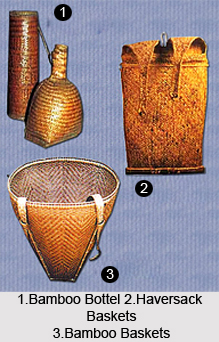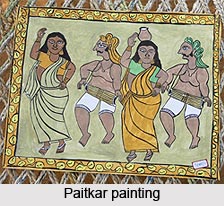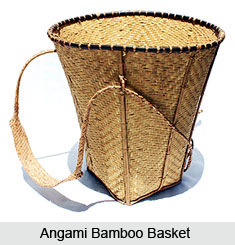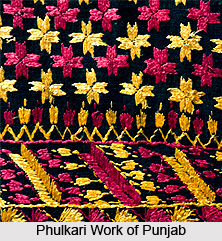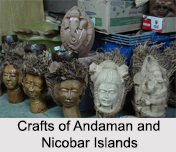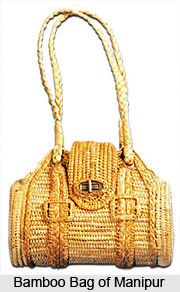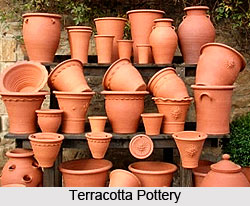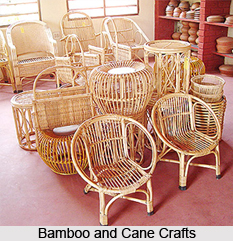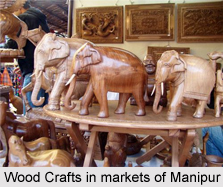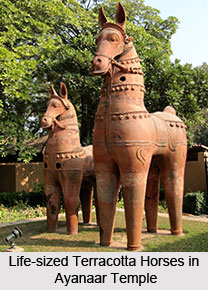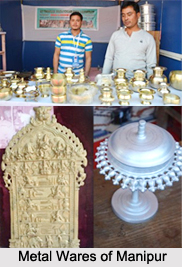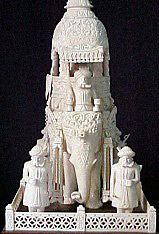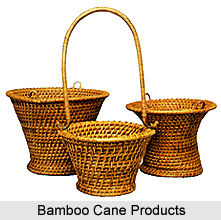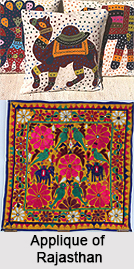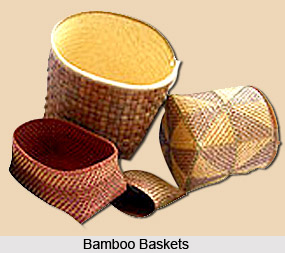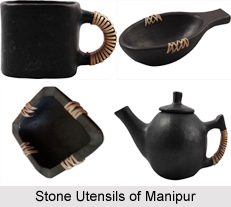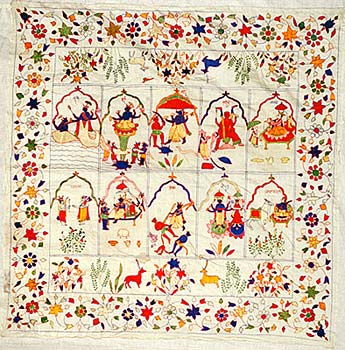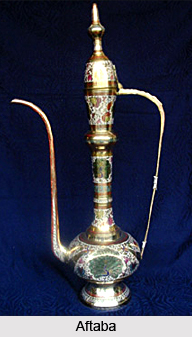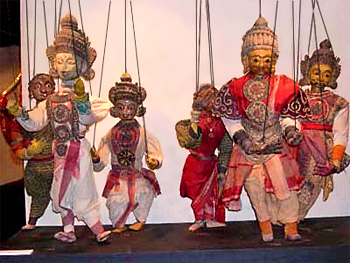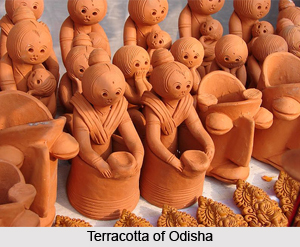 Clay crafts of East India bears the testimony of the eastern Indian art and craft zone. Orissa are predominantly practised by the tribal people of Orissa. The terracotta art has given the artisans of Orissa involved in clay craft, a fresh enthusiasm and to exude their craftsmanship.
Clay crafts of East India bears the testimony of the eastern Indian art and craft zone. Orissa are predominantly practised by the tribal people of Orissa. The terracotta art has given the artisans of Orissa involved in clay craft, a fresh enthusiasm and to exude their craftsmanship.
Mainly in the rural parts of Orissa, the artisans create a wide range of clay items like pots, storage and cooking vessels, images of deities, lamps, figurines, bird and animal shapes, toys including tiles. Clay roof tiles are decorated with the figures of birds, squirrels, monkeys and mice on them. This tradition originated in the need to scare away wild animals and these animals perched on tiles act somewhat in the nature of scarecrows as believed by the local people. The clay crafts of Orissa are also known for the terracotta pottery which is done with refined clay. The clay items that are created by the terracotta process need the partially dried refined clay and then the cast is done. The mould then is given the desired shape and is placed in a furnace or atop combustible material in a pit for drying. This is followed by exposing the items to the natural temperature.
The tribal people who are engaged in the clay crafts of Orissa use special type of clay and design to suit the rustic appeal of the soil. Apart from creating roof tiles, the artisans create utensils that range from plates, khullars or the earthen tea cups, jars and many other kitchen items.
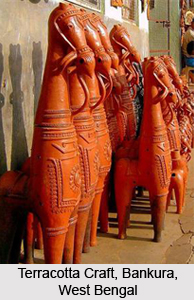 The created items are further embellished with vibrant colours and are very minutely outlined and highlighted. Sometimes the articles are given a finishing touch with the natural terracotta colour. Animal figurines of bulls, elephants and horses are also found among the clay articles of Orissa. Villages like Kusumi, Dashmantpur, Laxmipur, Kumbharput in Orissa have been remaining the centres of clay craft of the state.
The created items are further embellished with vibrant colours and are very minutely outlined and highlighted. Sometimes the articles are given a finishing touch with the natural terracotta colour. Animal figurines of bulls, elephants and horses are also found among the clay articles of Orissa. Villages like Kusumi, Dashmantpur, Laxmipur, Kumbharput in Orissa have been remaining the centres of clay craft of the state.
West Bengal is famous for the craftsmanship of clay craft. The clay crafts of West Bengal have got its recognition because at the time of cultural refinement and progression, the craft got the Royal patronage and the artisans got the encouragement to develop this unique craft. The artisans create different items out of clay and to give the items a distinct style and lustre a lot of techniques are followed by the artisans. The craftsmen involved in clay crafts usually follow two separate schools. One is the terracotta school in which the figurines are burnt to get the desired hardness and another is the school that does not follow the method of burning the clay items. This second process is more prevalent in Kumartulli and Krishnanagar in West Bengal.
These are available in different forms that include toys, the figures of Gods and Goddesses, animal and bird figures, mythological characters, pots, containers, plates for food, carts and figures of rural day to day life. The terracotta toys are created with minute details and the craftsmen are also deft in creating jewelleries out of clay that are called terracotta jewelleries. Sometimes to give the created items a life like charm and splendour, the artisans apply vibrant glossy or matt colours to the clay figurines. The human figurines, the statues of deities and other figurines of famous personalities are crafted and painted in this way. The terracotta Bankura horse of Bengal is quite famous in India and outside India as well.
The craft of pottery in West Bengal can be traced back to the Neolithic ages. Prehistoric archaeological evidences indicate a Neolithic stage of civilization in West Bengal. These have been largely collected from the districts on the border of Chota Nagpur and the Santhal Parganas that includes the regions of Bankura, Midnapore, Purulia, Birbhum and a part of Burdwan which has wedged itself in between Bankura and Birbhum (Asansol subdivision). This region is perhaps geologically, and also historically, oldest in Bengal.
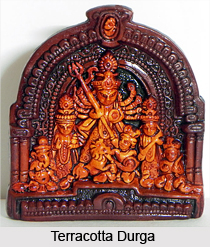
Since the equipment of pottery is very simple and the potter`s raw material (clay) is available everywhere, pottery thrived as a craft form. Such perambulating potters may still be found in some regions. However, such wandering potters are not a common phenomenon in West Bengal. On the contrary the crafts appear to be a domain of the women in Bengal. For instance, hand-made pottery is predominantly a woman`s art. Women of Kumbhakar (Potter) caste and of Patua caste also, generally make variety of dolls and toys in leisure hours. These hand-made figures, small dolls and toys, are done both by pressing and moulding methods
In Bishnupur, Chaurigacha and Katalia and some other places in Midnapore and Bankura, perhaps the most primitive method of hand-modelled pottery is still pursued, and that almost exclusively by women. Moreover, in general, it has been observed that big jars are usually prepared by men, and comparatively small pots are made by women" (Saraswati and Behura). This is also largely true of West Bengal.
